The 4-Day Santa Cruz Trek from the town of Huaraz in Peru’s Cordillera Blanca mountains offers adventurous travelers a chance to witness some of the region’s most breathtaking natural wonders. Trekkers will traverse stunning high-altitude terrain, cross a challenging mountain pass, and discover serene alpine lakes, all while immersed in the tranquility of the Andes. With an experienced local guide to lead the way, this meticulously planned itinerary provides the perfect blend of physical challenge and awe-inspiring scenery. But as any seasoned hiker knows, the true rewards of this trek extend far beyond the views.
This experience made our list of the 17 Best Hiking And Trekking Tours In Huaraz.
Key Points
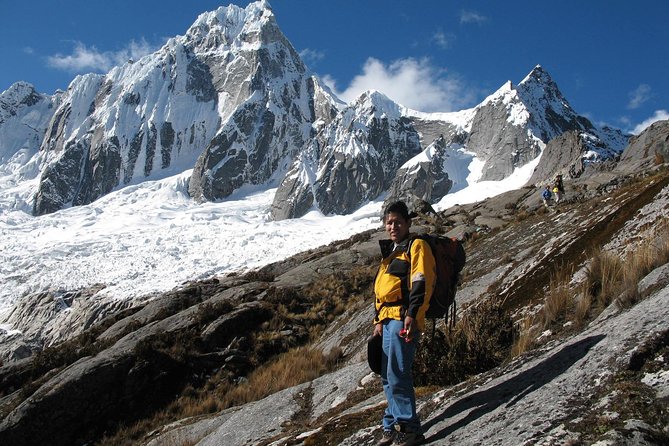
- The 4-day Santa Cruz Trek from Huaraz includes a challenging hike through the Cordillera Blanca, reaching a maximum elevation of 4750 m at the Punta Union Pass.
- The trek features stunning natural scenery, such as the crystal-clear lakes of Ichicocha and Jatuncocha, as well as panoramic views from the Punta Union Pass.
- Acclimatization is crucial, with the first day’s hike to Llamacorral serving as an important acclimatization stop before progressing to higher elevations.
- The trek is designed for comfort and includes transportation, a local trekking guide, tents, meals, and purified water, but additional luggage may incur extra charges.
- The trek is recommended for physically able travelers who are comfortable with rugged, steep terrain and the risks associated with high-altitude hiking, such as altitude sickness.
Overview and Itinerary

The Santa Cruz Trek from Huaraz, Peru is a 4-day hiking adventure that takes trekkers through the stunning landscapes of the Cordillera Blanca mountain range.
The trek starts at the Cashapampa trailhead for acclimatization before embarking on the journey.
On the first day, hikers trek from Huaraz to Llamacorral, which takes around 4 hours and covers 5 km, ending the day at a campsite at 3760 meters above sea level.
Day 2 sees trekkers move from Llamacorral to Taullipampa, a 6-hour, 8-9 km hike ending at a camp at 4200 meters.
The third day is the most challenging, with an 8-9 hour, 12 km trek from Taullipampa to Huaripampa/Cachinapampa at 3850 meters.
The final day involves a short hike to Vaquería and a transfer back to Huaraz.
Ready to hit more trails? More hiking adventures we feature in Huaraz
Inclusions and Logistics
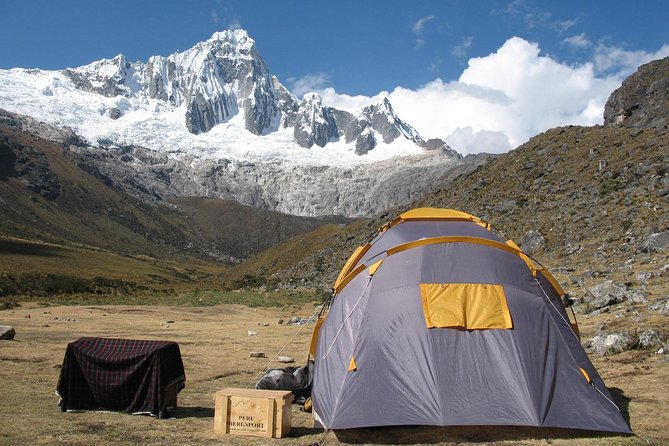
The Santa Cruz Trek from Huaraz includes pickup and drop-off from downtown Huaraz hotels, as well as a local trekking guide, tents, sleeping pads, meals, and purified water.
Transportation is provided via public minivan or automobile. Travelers should note that excess luggage charges may apply, and alcoholic drinks are available for purchase.
This trekking experience is designed to be convenient and comfortable, allowing participants to focus on the stunning natural scenery and challenging hikes.
The inclusions and logistics ensure a seamless and well-supported adventure, allowing trekkers to enjoy the beauty of the Peruvian Andes without having to worry about the practical details.
Hiking Details
Hikers embark on a 4-day journey, starting with a 2-hour hike to lunch on the first day, followed by another 2 hours to reach the Llamacorral campsite at 3,760 meters above sea level. The second day involves a moderate 6-hour hike with stunning views of Ichicocha and Jatuncocha lakes. On day three, trekkers tackle a zig-zag path to the Punta Union pass at 4,750 meters, taking approximately 8-9 hours. The final day’s hike to Vaquerí a is short, followed by a journey through the Portachuelo Llanganuco Pass at 4,750 meters.
| Day | Duration | Distance | Elevation |
|---|---|---|---|
| 1 | 4 hours | 5 km | 3,760 m |
| 2 | 6 hours | 8-9 km | 4,200 m |
| 3 | 8-9 hours | 12 km | 4,750 m |
| 4 | Short hike | – | 4,750 m |
Health and Safety
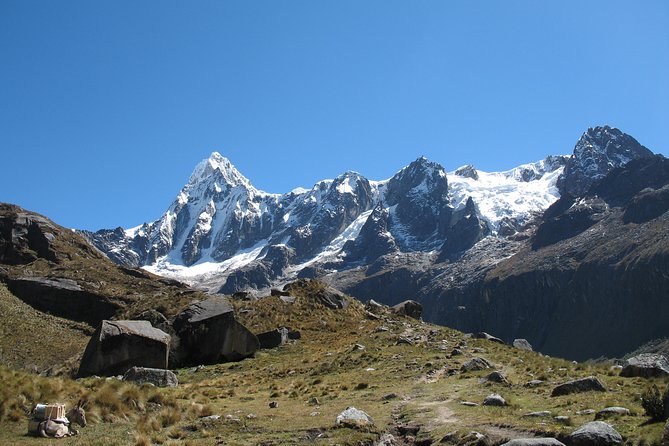
It’s not recommended for travelers with back problems, heart issues, or serious medical conditions to undertake this trek. The trail isn’t wheelchair accessible, but service animals are allowed.
Hikers should be mindful of the following health and safety considerations:
-
The trek reaches elevations up to 4,750 meters (15,584 feet), which can cause altitude sickness. Proper acclimatization is essential.
-
The terrain is rugged, with steep inclines and uneven ground, posing risks for those with physical limitations.
-
Weather conditions can be unpredictable, with the potential for heavy rain, snow, and strong winds.
-
First-aid supplies and emergency evacuation procedures are in place, but prompt medical attention may be challenging in remote areas.
-
Proper gear, hydration, and nutrition are critical to ensuring a safe and enjoyable trekking experience.
Reviews and Feedback

Traveler reviews of the Santa Cruz Trek from Huaraz paint a highly positive picture, with an overall rating of 5.0 across 4 reviews.
Tourists consistently highlight the trek’s beautiful scenery, well-organized hikes, friendly guides, and excellent meals. One reviewer even stated the trek was more beautiful than the iconic Machu Picchu.
Hikers appreciated the organization and logistics, including the pickup and drop-off service, tents, and purified water provided.
While the trek isn’t recommended for those with certain medical conditions, it seems to offer an exceptional experience for those who are physically able.
The overwhelmingly positive feedback suggests the Santa Cruz Trek is a must-do for nature lovers visiting Huaraz.
Here are more great tours and experiences we've reviewed in Huaraz
Acclimatization and Trailhead
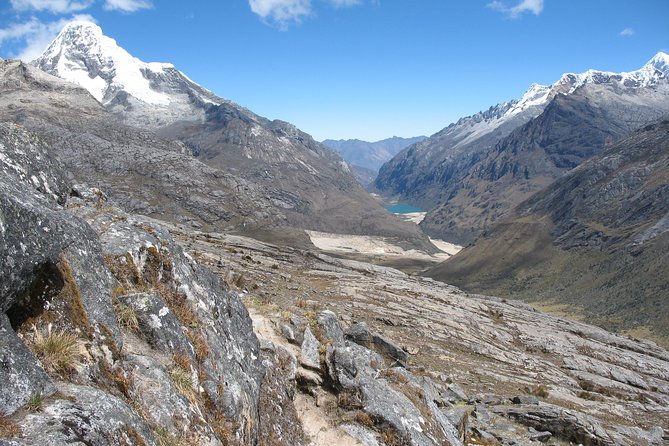
The trek begins at the Cashapampa trailhead, which serves as an important acclimatization stop for hikers before embarking on the challenging 4-day hike. Trekkers start their journey at this lower-elevation access point to allow their bodies to adjust to the high altitudes ahead.
Some key aspects of the acclimatization process at the trailhead include:
-
Gradual ascent to higher elevations over the course of the trek
-
Drinking plenty of water and staying hydrated
-
Avoiding strenuous activities during the first day or two
-
Monitoring for symptoms of altitude sickness and communicating with the guide
-
Taking it slow and allowing the body time to adapt to the thinner air
Stunning Lakes and Landscapes
Along the Santa Cruz Trek, hikers are treated to a series of breathtaking lakes and landscapes that showcase the raw natural beauty of the Cordillera Blanca mountain range.
Trekkers will marvel at the crystal-clear waters of Ichicocha and Jatuncocha lakes, which reflect the towering glaciated peaks surrounding them. The path winds through grassy meadows and past cascading streams, offering ample opportunities to soak in the serene Andean environment.
As they ascend towards Punta Union pass, adventurers will be rewarded with panoramic vistas of rugged, snow-capped mountains. The diverse terrain and awe-inspiring scenery make the Santa Cruz Trek a true highlight for nature lovers and outdoor enthusiasts exploring Peru’s stunning highlands.
Challenging Terrain and Passes
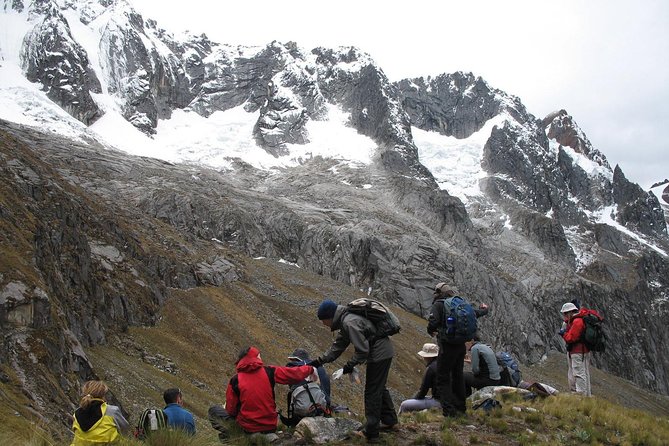
One of the most challenging aspects of the Santa Cruz Trek is navigating the steep, winding paths and high-altitude passes that hikers must conquer along the way.
Trekkers will face a grueling ascent to the Punta Union pass, which reaches an elevation of 4,750 meters (15,584 feet). This zig-zag trail tests both physical and mental stamina, as the thin air and constant incline can be overwhelming.
Other challenging terrain includes:
-
Traversing rocky, uneven ground
-
Crossing suspension bridges over raging rivers
-
Climbing up steep, rocky sections using hands for support
-
Maintaining balance on narrow, exposed paths
-
Dealing with the effects of altitude, such as fatigue and shortness of breath
Despite the demanding nature of the trek, the stunning vistas and sense of accomplishment make it a rewarding experience for adventurous travelers.
Frequently Asked Questions
What Is the Best Time of Year to Do the Santa Cruz Trek?
The best time to do the Santa Cruz Trek is during the dry season from May to September, when the weather is mild and the trails are less muddy. Peak season is June to August, offering the most reliable conditions.
How Difficult Is the Trek Compared to Other Peruvian Treks?
The Santa Cruz trek is considered moderately difficult, requiring a good level of fitness and acclimatization. It’s less demanding than the famous Inca Trail but more challenging than some other popular Peruvian treks like the Lares Trek or the Salkantay Trail.
Can I Rent Equipment for the Trek in Huaraz?
Yes, you can rent necessary equipment for the trek in Huaraz. Many local trekking outfitters offer gear rentals, including hiking boots, sleeping bags, and other essential items. This allows travelers to pack light and access quality gear without needing to bring their own.
What Should I Pack for the Santa Cruz Trek?
When preparing for the Santa Cruz Trek, travelers should pack warm clothing, including layers, a rain jacket, sturdy hiking boots, sun protection, a water bottle, snacks, and any necessary medications. It’s also wise to bring a headlamp and a portable charger.
Are There Any Cultural or Historical Sites Along the Trek?
There are no major cultural or historical sites along the Santa Cruz Trek. However, the trek offers stunning Andean scenery, including alpine lakes, glaciers, and snow-capped peaks. Hikers can learn about local Quechua culture from the experienced guides.
Recap
The 4-day Santa Cruz Trek from Huaraz offers an unparalleled adventure through the breathtaking landscapes of Peru’s Cordillera Blanca.
Hikers will traverse stunning terrains, including the challenging Punta Union pass, and witness beautiful lakes like Ichicocha and Jatuncocha.
With a well-organized itinerary, local guides, and essential amenities, this trek is a must for nature enthusiasts seeking a memorable outdoor experience in the Andes.
More Hiking & Trekking Tours in Huaraz
- Private Trekking Route Through Churup Lagoon
- Ancash: Trekking and Adventure to Quillcayhuanca |3D-2N|
- From Ancash: Trekking Santa Cruz/Llanganuco |4 Days-3 Nights|
- Private Hiking Route to the Portachuelo Viewpoint.
- From Ancash: Trekking to Churup Lagoon |Full Day |Private|
- From Ancash: Huayhuash Full Circuit Trek |10days-9nights|
More Tour Reviews in Huaraz
Not for you? Here's more things to do in Huaraz we have recnetly reviewed
- 4 Best Guided Tours In Huaraz
- 6 Best 4 Day Tours In Huaraz
- 11 Best Full-Day Tours In Huaraz
- 3 Best 2 Day Tours In Huaraz
- 3 Best 3 Day Tours In Huaraz
- 3 Best Lunch Experiences In Huaraz
- From Ancash: Trekking Huayhuash Queropalca |7Days-6Nights|
- From Ancash: Trekking Alpamayo Cedars |9Days-8Nights|
- Huaraz: Pastoruri Glacier Day Trip
- From Huaraz: Trekking Santa Cruz – Llanganuco 4D/3N
- From Ancash: Full Huayhuash Circuit Excursion:10Days-9Nights
- From Ancash: Huayhuash Queropalca Trekking 7 Days-6 Nights
